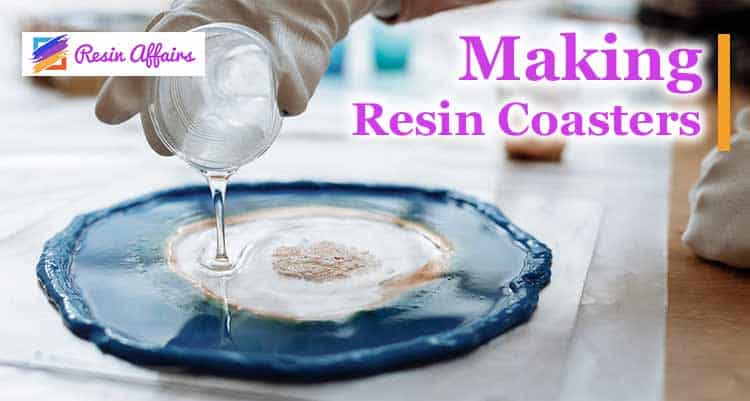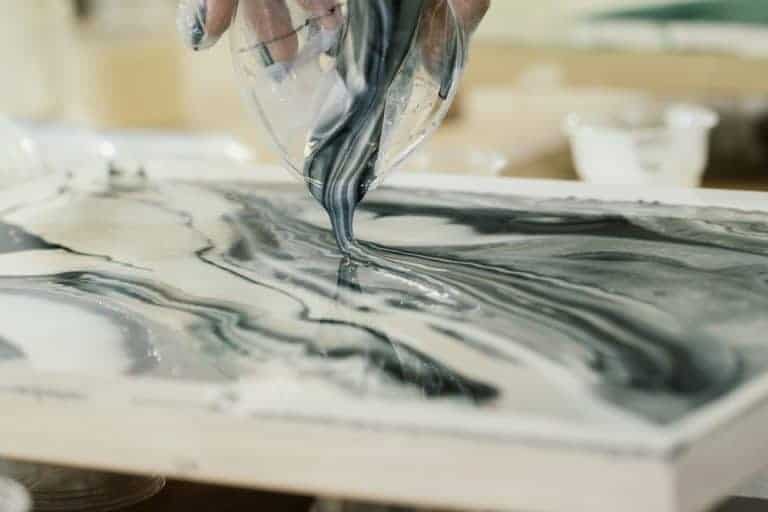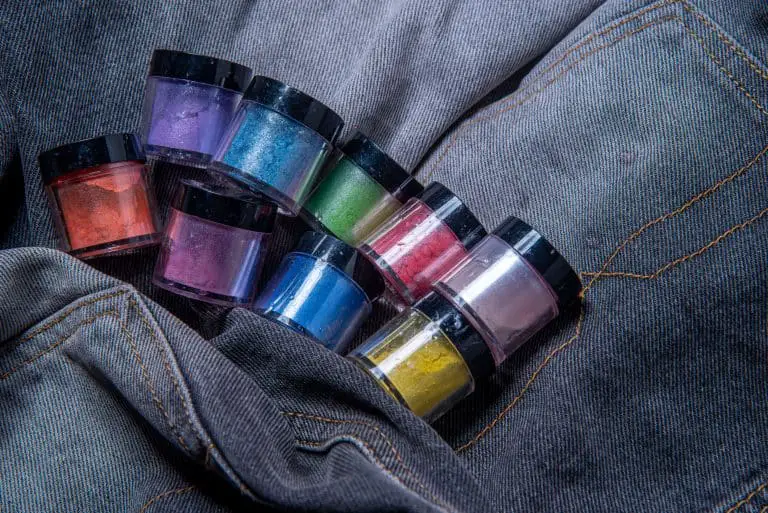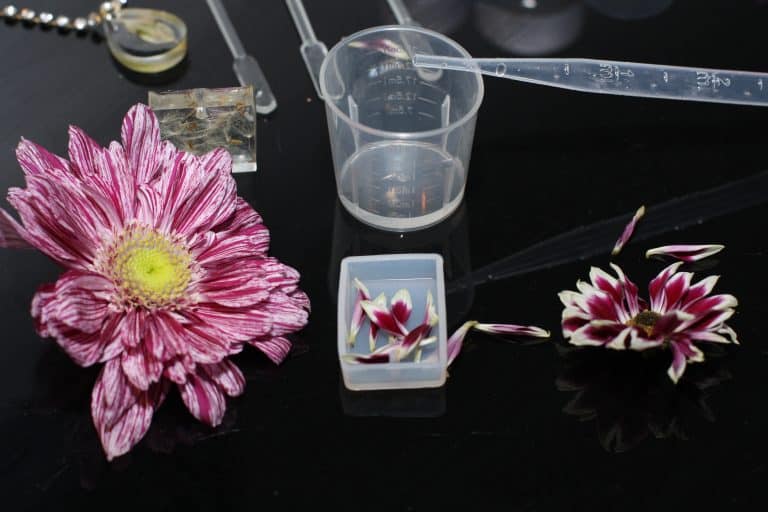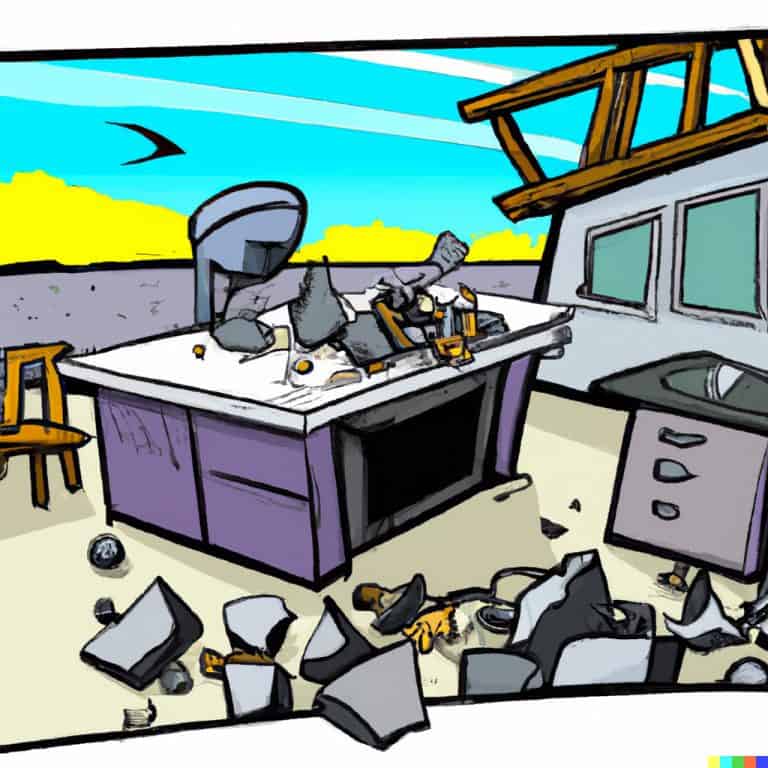How to Make Epoxy Resin Coasters Step by Step
DIY resin coasters is a fantastic beginner Project makers should start out with when working with epoxy resin similar to making paperweights and phone cases.
Epoxy coasters are ideal to use to protect your furniture and add a decorative feel to the tables. On top of that, they safeguard various surfaces from any type of damage.
But how do you make DIY resin coasters? Well, by the end of this article, you should be able to create your epoxy resin coasters like a pro. Besides, it’s relatively simple that anyone, including beginners, can handle it.
Maybe I can even give you a few epoxy coaster ideas to help get those creative juices flowing and get you making coasters to build up your experience and move on to bigger projects.
You could even try selling your DIY resin coasters projects at craft shows or online sites like Etsy.
That being said, let’s check out how to make epoxy resin coasters for beginners step by step!
How to Make Epoxy Resin Coasters
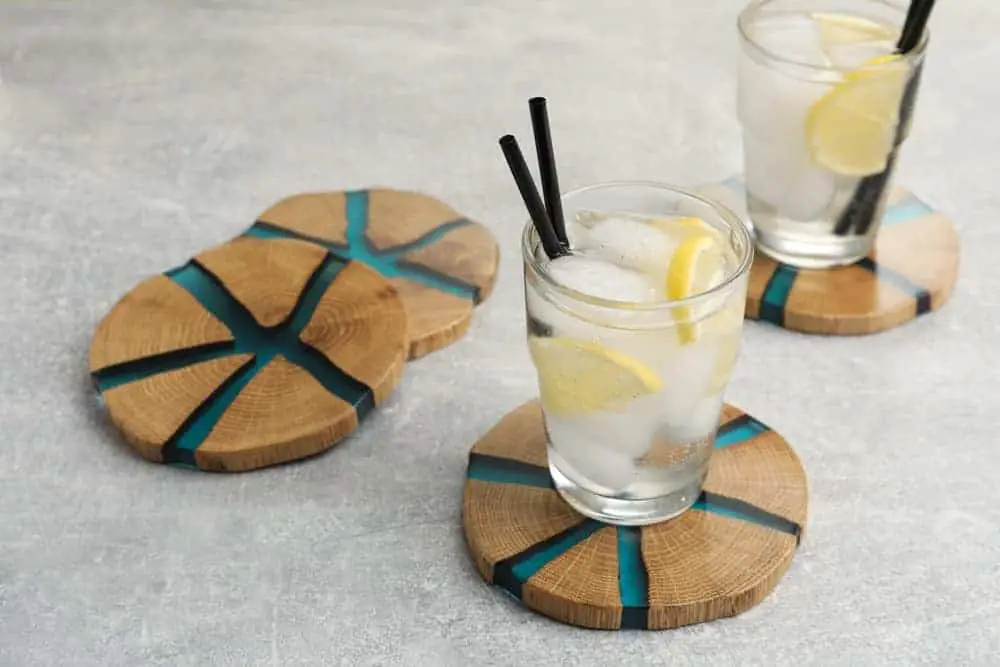
using the materials and steps below anyone can feed their creativity, creating DIY resin coasters with epoxy. It’s a simple process that doesn’t even require any rock-solid expertise. Making resin coasters with silicone molds is a great fun way to start out in the resin craft.
So let’s first start by checking the list of things you’ll need to make epoxy resin coasters;
Gathering Equipment and Materials
Safety & Cleanup Equipment
Plastic Drop Sheet
Lay these on the floor to protect from any spills.
Wax Paper
This is helpful to cover up your work area if you are working on small projects.
Respirator
Ensure you get a high-quality respirator with changeable filter cartridges that can filter fumes and airborne particles like sanding dust.
Safety Glasses
Your eyes are one of your most valuable assets. Always protect them.
Workshop Apron
Not a necessary item buy great to keep resin and other materials like pigment and glitter out of your clothes.
Nitrile Gloves
Nitrile gloves are more chemical resistant than latex gloves, you also have more feeling in your hands than when using rubber gloves.
Acetone
Acetone helps clean up uncured epoxy.
Materials
Clear Epoxy Resin and Hardener
The main ingredients look for low odor and non-yellowing you can also buy heat-resistant resin that withstands higher temperatures.
Silicone Coaster Molds
These come in many different shapes so find a design you like. there are many different sellers to look through to get resin coaster ideas.
The release agent will help you release the coaster from the coaster mold.
Plastic Measuring Cup
Buy disposable cups for your resin crafts in bulk. That way you shouldn’t run out in the middle of a project.
Mixing Sticks
You can use pretty much anything as a mixing stick as long as it’s clean but it is good to have heaps of popsicle sticks on hand. If you hate stirring try one of these.
Craft Tweezers
Use these to help hold down small objects inside your resin coaster molds as you pour in the additional resin mixture.
Disposable Transfer Pipettes
Great for measuring color or putting drops in the resin to make fancy designs.
Color Pigments
There are so many different types to choose from, this is a topic all by itself.
Butane Torch
Removes any surface air bubbles.
Assortment of Wet Dry Sandpaper
Sanding the coasters will fix any imperfections and clean off the edges.
Remember, there are many different shapes sizes, and designs of resin coaster molds. So, while gathering materials, and protective gear, spend time choosing the right resin coaster mold for your project. Once you have collected everything you need, move on to the first step below.
10 Easy steps to Making Epoxy Resin Coasters for Beginners.
1. Prepare the Working Area
First and foremost, When you are working with resin make sure you are wearing your respirator and the room you intend to work in is well-ventilated.
If you don’t have a good respirator get one.
Also, before you start handling any material, put on nitrile gloves to protect your hands. After that, cover the working surface with wax paper or a plastic drop sheet. you don’t have to be fancy here its just for catching spills.
Then lay out the materials on the prepared surface.
Remember, if you’re working for a long time without a respirator, there’s a high chance you will begin to feel the effects of the fumes.
Purchase Any Missing Materials
After you have laid all of your materials and tools out do a final review and make sure that you have everything required.
Epoxy resin crafting is very time sensitive, once you start you won’t have a chance to run down to your local craft store or order your missing item online. once you start you will have to keep going until you are ready to set the project aside to cure. So make sure that you have everything you need.
Something to also consider is that when you have finished creating your epoxy coasters the epoxy will need to cure undisturbed for a minimum of 24 hours. Meaning if you are working in a shared space like a garage you might not be able to do a full cleanup to put the car away for the night.
Also before you start ensure your butane torch is full before you start working you do not want to spend time refilling your torch with butane while your resin is curing with bubbles still in it.
2. Prepare Your Silicone Coaster Molds
Preparation is key to making perfect epoxy coasters.
It’s the old saying what you put is what you get out and making DIY epoxy coasters is just the same.
You must thoroughly clean the silicone molds with hot soapy water to remove any type of dirt and fingerprints that may have made their way onto the coaster molds. Make sure the coaster mold is completely dry before you move on.
Then apply the release agent, either by wiping with a cloth/paper towel or spraying the agent into the silicone molds making sure that every part of the mold has been coated with the release agent.
You must ensure full coverage of the silicone molds.
The release agent prevents your new epoxy resin coaster from sticking to your silicon mold and causing damage to the silicone. In the best-case scenario, the resin coaster will be difficult to remove from the silicone mold.
3. Measure & Mix Epoxy
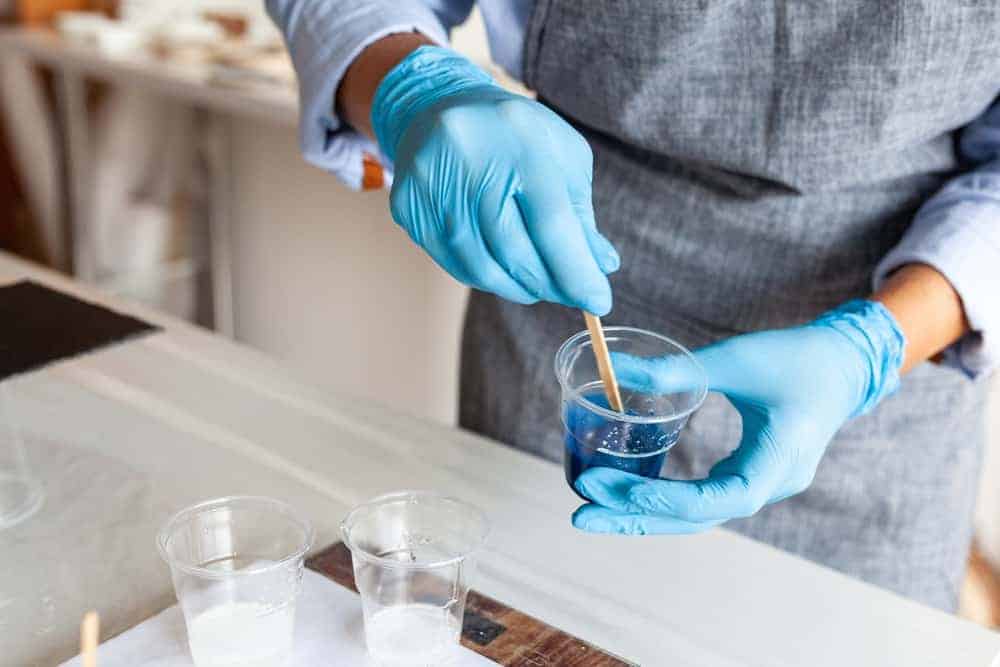
Mixing
Pour the ratio of resin and hardener advised on the manufacturers packaging into 2 separate measuring cups. This will generally be equal proportions of each, however, the mixing ratio may vary and it’s always best practice to confirm the ratio.
Bad things can happen if you mix resin incorrectly.
If the mix does not contain enough hardener the resin coaster may not cure evenly or the cure time is drastically increased. If the mix contains too much hardener the resin coaster will overheat and cracks will open or could in the worst-case scenario CATCH FIRE! Silicone molds are heat resistant and will withstand some heat, but they are certainly not fireproof.
Once you have your ratios correct mix resin and hardener together into one cup and stir with a clean stir stick. After the mixing is complete, make sure that you have completely mixed the resin, let the resin sit for 3 minutes in the mixing cups to let any bubbles float to the top.
Stirring slowly will prevent bubbles but is not really the most efficient way of mixing resin. Often people with larger pours will need to mix more resin and will use a drill with a mixing paddle attachment to mix their uncured resin.
Gently tap the mixing cup against the work surface. This will help to release any bubbles that may be trapped in the mixture.
Adding Color
At this stage, we need to decide if the coasters are going to be crystal clear or if you want to add color.
Epoxy is purchased as clear epoxy and we add color pigments in the form of powders or dyes. If you decide to add color you need to separate your resin and hardener mix into separate disposable cups. You will need 1 cup for each color you plan to add.
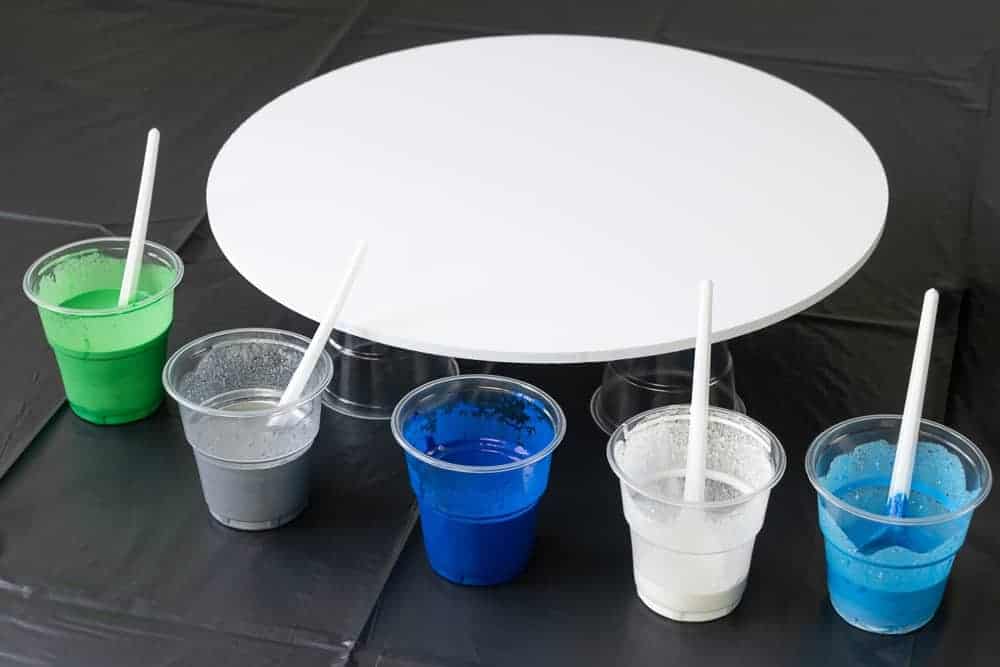
Method 1: Casting Objects Into the Coaster
4. Pour the first Layer of Resin
The initial layer requires a small amount of the mixture to be poured into the coaster molds. You just need to pour enough to cover the bottom of your silicone mold.
Then tip the molds from side to side until their bottoms are covered uniformly. Now, pass a heat gun or butane torch over the resin to release any bubbles on the surface and leave the coaster to cure.
This is the only stage in the process before setting the project aside for the final curing that you can stop at if needed. You’re waiting for the first pour of the resin to cure anyway.
5. Add Decorative Items
Place your decorative objects over the first layer. The position and location of those items are up to you. After placing the items on the epoxy, you may need to add some more epoxy to et your objects to sit where you want them.
These items could be almost anything like dried flowers, pebbles or precious stones, sand wood, or small pieces of is up to your imagination what combination of colors and objects you can use to make beautiful coasters to add to your home decor.
6. Top off Your Castings
After embedding objects, pour the final coat of epoxy to fill the molds. Unfortunately, some embedded items can float or shift as you top off the castings. If that happens, use a stir stick or pin to submerge them into the mixture.
The other thing you may note while pouring epoxy is the formation of large air bubbles. Luckily, you can easily get rid of these bubbles by popping them with a needle or pin.
Lastly, avoid overfilling the castings and ensure the poured epoxy is level. For this reason, we recommend that you go with a self-leveling epoxy.
Method 2: Single Pour Casting
4. Pour all of the resin into the silicone mold
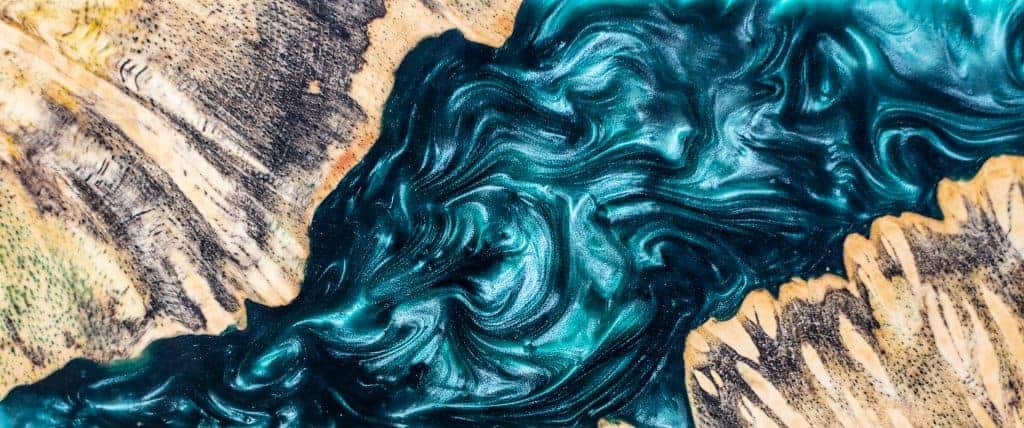
If you are not planning make resin coasters that do not have any objects embedded into them, you can pour resin to completely fill up the coaster mold. often single pour coasters are color rich and this is ideal if you plan to make coasters with swirls or marble effects witch can look very beautiful mica powder is an ideal coloring material to add pigments sit suspended in the clear epoxy creating a 3D effect.
Another resin coaster Idea is to use a transfer pipette to drop alcohol ink into the coaster molds creating a unique effect.
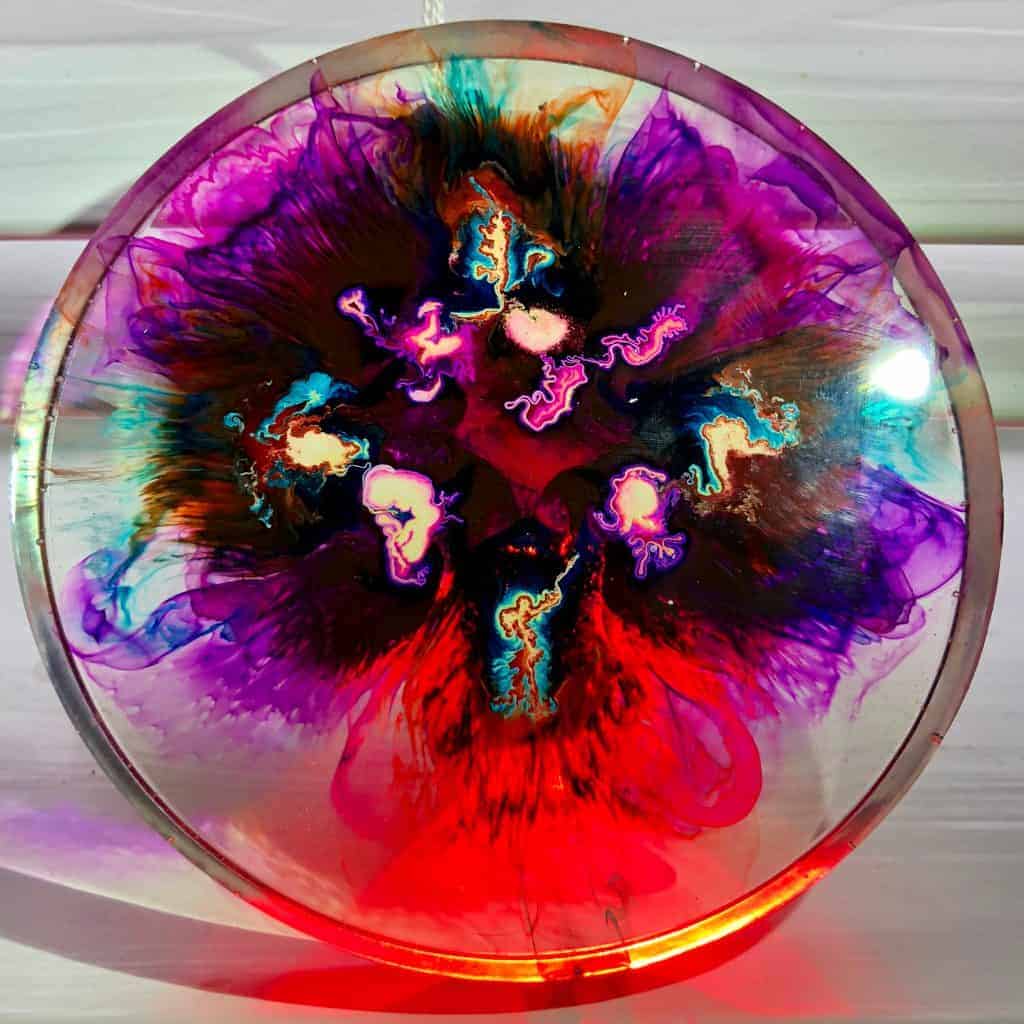
If pouring in a single resin layer you can skip 5 and 6
7. Remove Air Bubbles
We mentioned how you could pop large bubbles earlier, right? But, what about the small air bubbles? Well, that’s why this step is equally important.
We advise that you let your castings rest for about 5 minutes. Doing so will allow air bubbles to rise to the resin surfaces. Better still, some bubbles pop on their own. But the keyword here is ‘some’, meaning not all bubbles will pop.
To eliminate the bubbles, you should use either a heat gun or a butane torch. Turn it on and move it around the resin until the mixture is bubble-free.
8. Leave the Castings to Cure
Curing time tends to vary from one epoxy to another. Read the manufacturer’s guidelines to determine the precise curing time. Nonetheless, most epoxies take 24 hours to dry to the touch and 48 hours to cure fully. So, leave the castings for at least 24 hours before you handle them.
Before you leave the molds to cure, cover them with a clean cloth. This prevents dirt and other pollutants from settling on the resin as it cures.
9. Remove the Resin Coasters from the Molds
Once the epoxy is fully cured, you need to de-mold the coasters. But first, check whether the resin has cured fully or not. If the molds are still flexible and bendable, then the curing process is not yet complete. In that case, you should give them more curing time.
When the epoxy is fully cured, gently bend the castings. And since you have used a mold release agent, they will come out easily.
10 Finish Your Coasters
In most cases, cured epoxy comes out strong with a smooth surface finish. However, that will not always be the case! In some instances, they may have sharp or dull edges that can scratch the tabletop. You need to cut or polish the coasters to smoothen off those edges and get a better finish.
To accomplish that, wet sand the edges or use fine-grit sandpaper. Continue sanding them until you get smooth and uniform edges.
What is a Resin Coaster Used for?
Coasters offer an elegant way of decorating your tables and serving beverages while protecting their surfaces. With their impressive durability, they safeguard tables from cold or hot drinks. Even better, they are water-resistant, thus protecting them from moisture as well.
Conclusion
The bottom line, coasters are attractive, beautiful, and useful items. That’s why they’re commonly used for functional and decorative purposes. And hopefully, now you can craft your coasters by following the steps highlighted above.
So, don’t shy away from giving this fun and exciting activity a try.
FAQs
1. What does resin not stick to?
There are certain materials that epoxy will not adhere to. Some of these surfaces include; nylon, polypropylene, Mylar, and Teflon.
2. How much epoxy do you need to make 4 coasters?
The amount of epoxy needed for coaster-making will vary depending on the shape and size of the coasters. However, 60ml of epoxy can make about 4 coasters.
3. Why are my resin coasters sticky?
Resin coasters can become sticky because of various reasons. For instance, if you leave the resin to cure at a low temperature, it will become sticky. The same can also occur because of inaccurate mixing of the resin and hardener.
4. Are resin coasters waterproof and heat resistant?
When the resin cures fully, it becomes both heat- and water-resistant. That’s one of the many reasons they are used to cover table surfaces.
5. How much heat can resin coasters tolerate?
Cured resin can withstand temperatures ranging from 150 – 300 degrees Fahrenheit. However, some products can tolerate higher temperatures than that.

